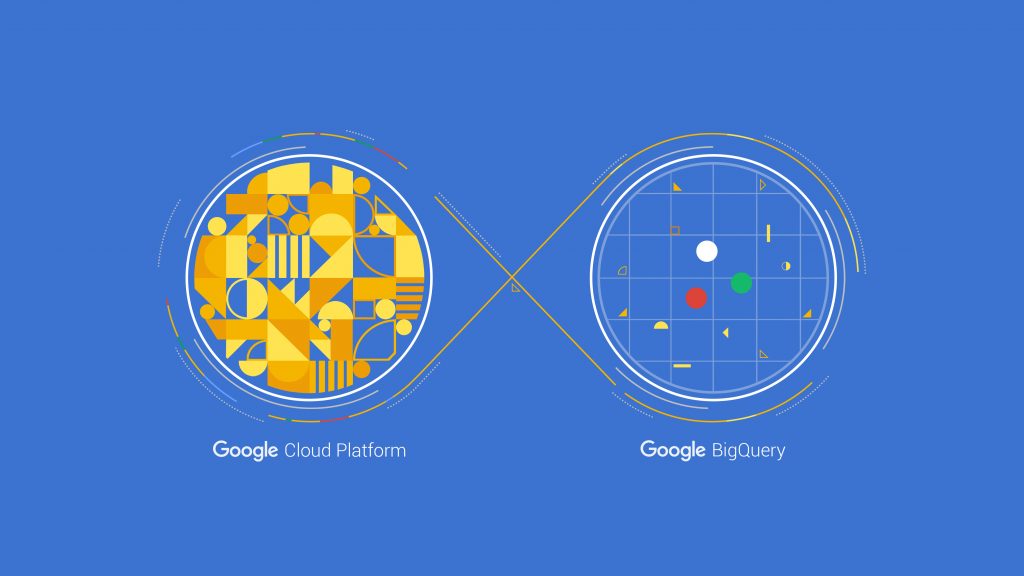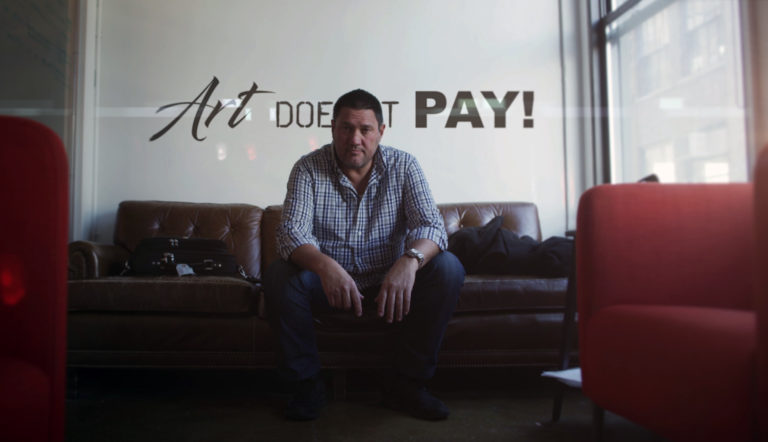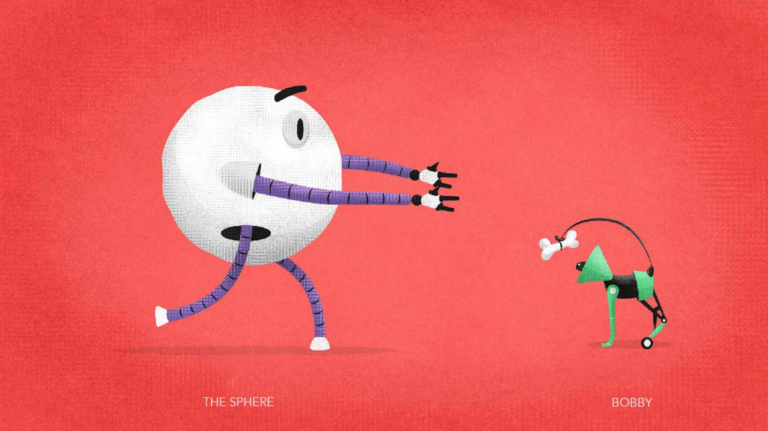Editor’s Note: Coat of Arms is an award-winning post-production company and Frame.io customer. They do amazing work so we wanted to share with our readers some of their processes when serving Fortune 100 clients.
What is Brand?
Brand is personality. It’s a semblance of a soul or spirit we try to give our products or services to make them more relatable. The irony of this struggle lies in the cliché criticism, “Advertising is soulless.” If this sentiment is true, how apropos that a soulless industry searches endlessly for a soul.
But the truth of the matter is that companies have to project a clear identity, including a straightforward voice, story, and message, if they wish to succeed. And it is vital for every artist working for that company to portray that identity in their work.
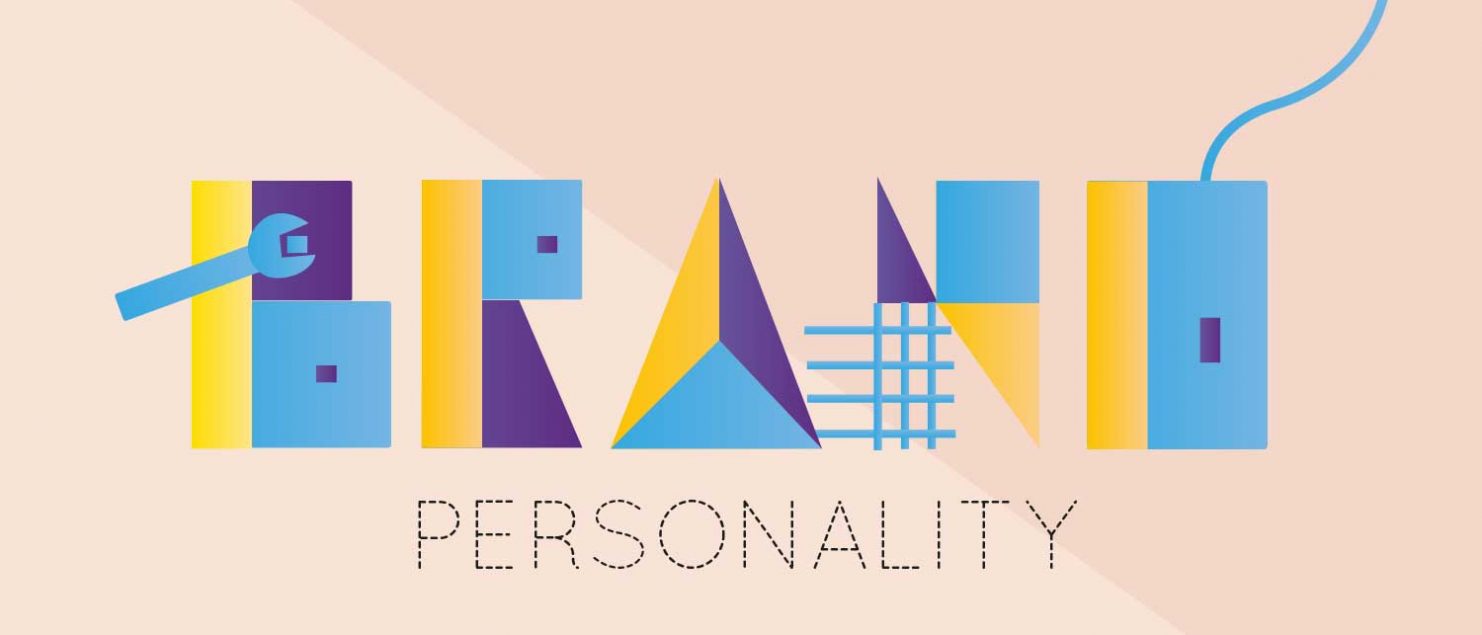
Artwork credited to Dreambox
Brand giants like Apple, Nike, Volkswagen, and Google, often have the most concise but recognizable branding out there. These brands use distinct colors, visuals, copy, and messaging. But how do they do it? Where do they begin? This blog explores brand identity and how we, at Coat of Arms, approach branding. Specifically, we will outline our process in creating an explainer video for Google BigQuery, and how to express a brand accurately.
Brand Guidelines
When we begin scripting and designing a video, we ask our clients to send their brand guidelines or brand standards: an index of fonts, colors, rules, and exceptions companies use to outline their brand identity. Some brand guidelines are a single page and some are pages long, expressing minute details like the company’s history, core values, personality, color codes, logo proportions, and branded typeface.
Coat of Arms’ simple, one-page brand guidelines give designers the key information they need to get started on branded content for our post-production company. It includes our logo, a short description of our brand philosophy, font, color codes, and some general rules pertaining to the design, color, texture, and shading of our icons.
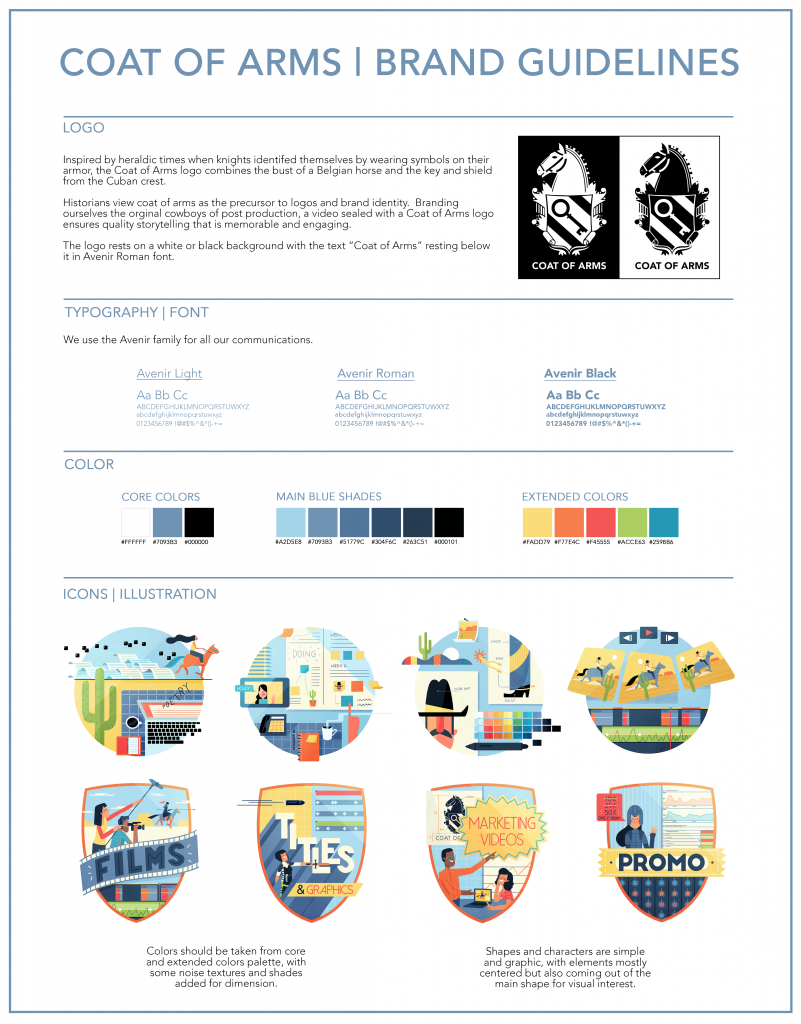
On the other hand, the brand guidelines from Google are far more detailed. You may think, “But Google’s brand is so simple and recognizable. Why do they need so many details in their standards?” Although Google’s branding appears simple, its guidelines are carefully crafted so that their designers and vendors, like Coat of Arms, can hit the narrow target that is their identity. American graphic designer Paul Rand put it best:
Design is so simple, that’s why it is so complicated.
Paul Rand
Rand, who designed many posters and corporate identities, including the logos for IBM, Apple, UPS and ABC, understood the art of minimalism and how difficult it is to harness simplicity and restraint.

To help their designers and subcontractors harness that “simple” Google identity, Google created a very clear, albeit lengthy, set of rules. In fact, Google has distinct brand guidelines for many of their products and platforms (e.g. Google Cloud Platform, Google Chrome, G-Suite, etc). While some rules overlap within these guidelines, each product has specific rules and exceptions. Here’s an excerpt from the Google Cloud Platform brand standards.
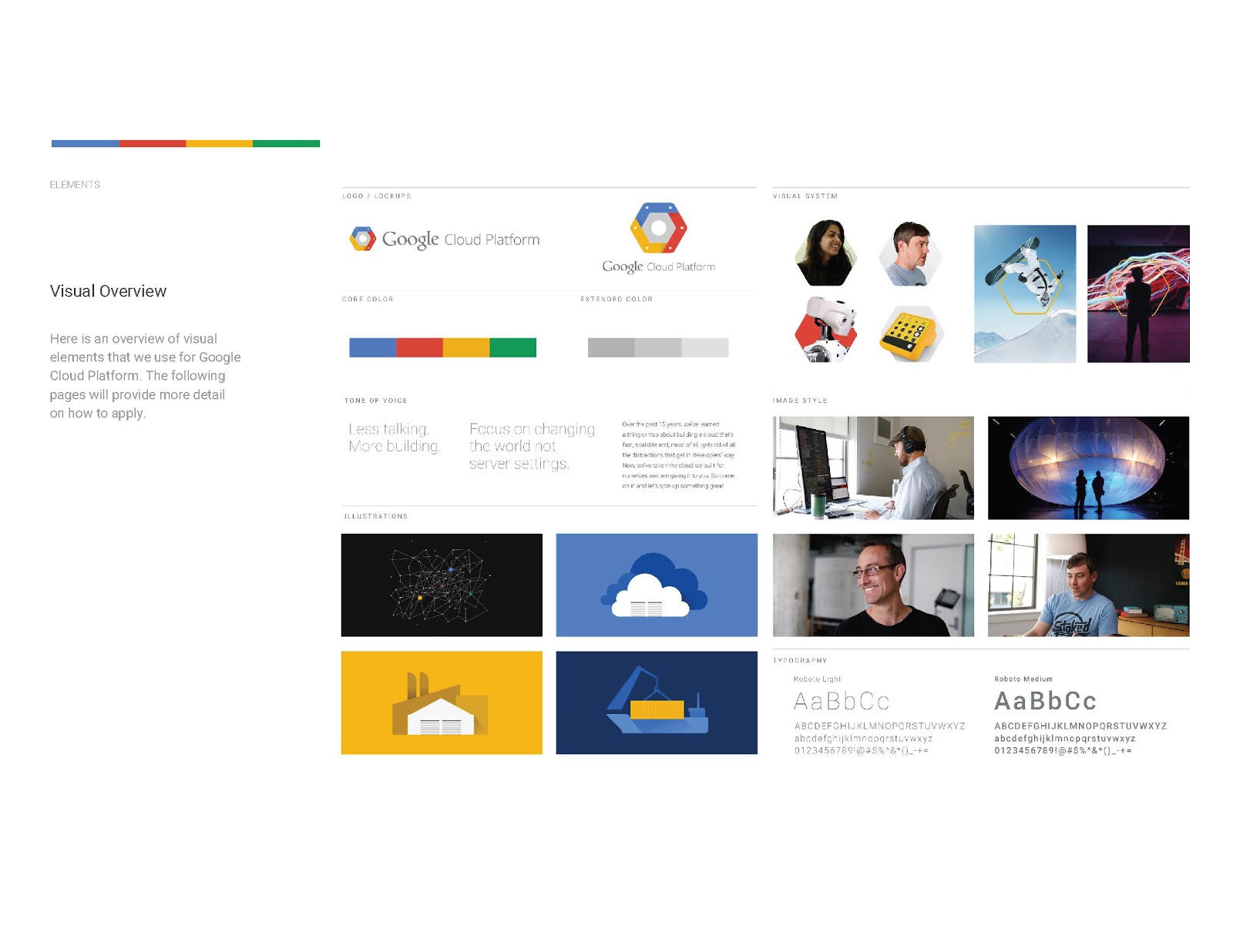
This excerpt is only one page from a sixty-one page brand book. Within this guideline, it describes rules pertaining to brand strategy, applications, promise, voice, logo, icons, color, illustration style, typography, tagline, proportions, and much more.
All of this could be quite overwhelming. So, what do you do once you’ve received the brand standards? We like to start with color.
Color
Colors convey meaning. Brands speak to you subconsciously as they project emotions through shades of light and dark. For example, BP wants you to think they are environmentally friendly just like Whole Foods with their strong green logos. Coke and Target invoke excitement and youth with their vibrant reds. Dell, IBM, Intel, and HP invite you to see strength or intelligence in their blues, which just happens to be the most prominent color used in branding. Color is important, and according to Column Five Media, color is the first thing a consumer will notice about your brand.
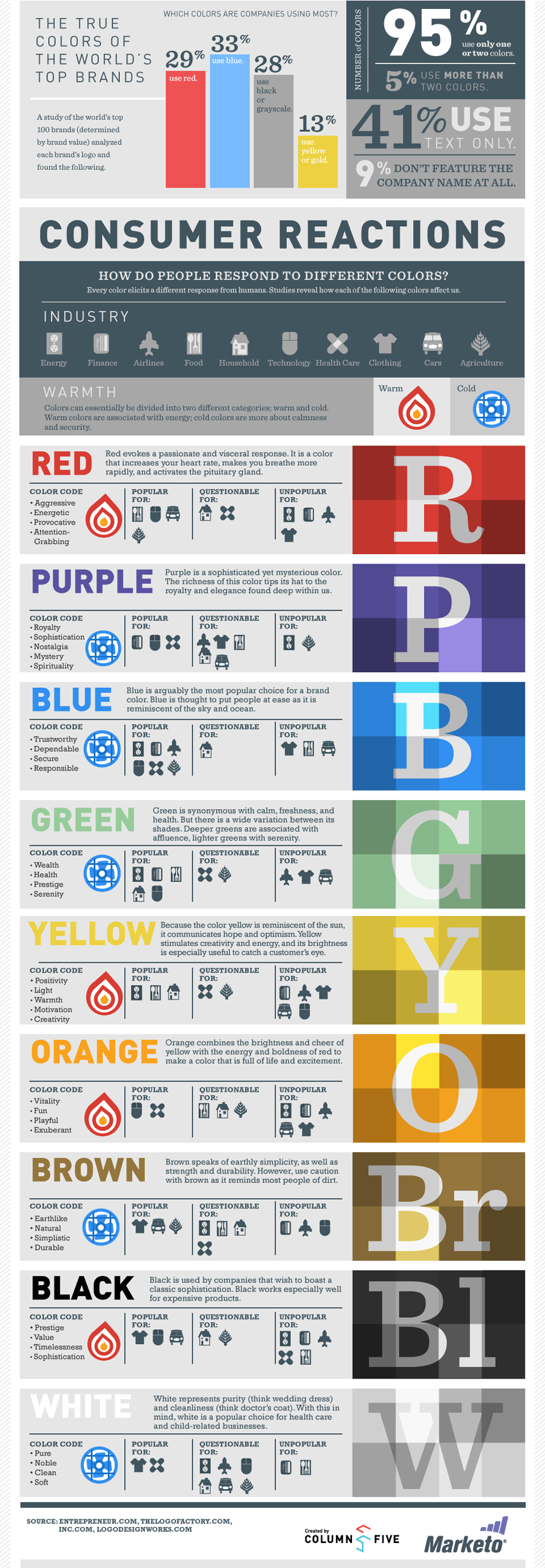
We had the opportunity to work with Google again. The first time was an explainer video for their Google Docs showcase. This time, we were tasked with helping brand Google BigQuery with their first video. Google BigQuery allows users to run queries and analyze data using the processing power of Google’s infrastructure. Without its own set of brand guidelines but with a goal to uniquely explain their service in under two minutes, the Google BigQuery team requested that their video hold some brand allegiance to Google Cloud Platform’s colors and voice.
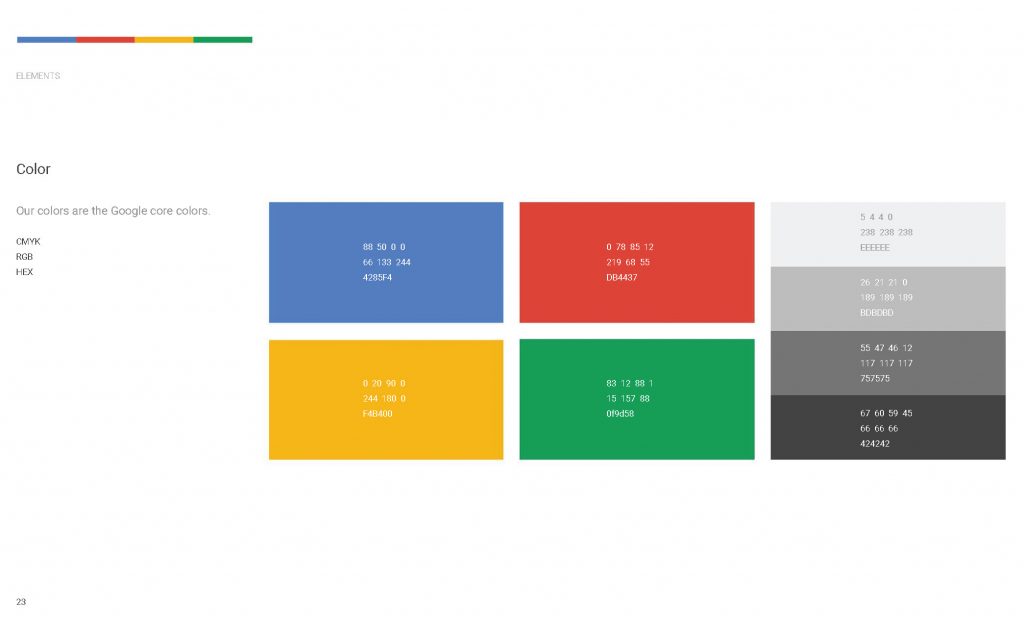
Google Cloud Platform’s Color Codes
Using Google Cloud Platform’s guidelines as our map, the Google BigQuery team gave us permission to explore accent colors using Google’s Material Design palette. The color palette starts with primary colors and suggests a complete and usable palette for accents.
Style Frames: A Test in Brand Comprehension
Testing our brand knowledge and our understanding of the video’s mission, we moved on to style frames. We chose to explore a scene that depicts the benefits of Google BigQuery’s relationship with Google Cloud Platform. In these early styleframe explorations, we played with colors and textures while maintaining a relatively simple tone that could still live within a Google branded world.

Initial feedback was positive, but the general consensus was that we needed to refine and simplify. Colors were accurate and within brand, but the Google voice wasn’t spot on. So, while we simplified the backgrounds, reduced texture, and refined colors, we explored and honed the voice.
Voice
Google Cloud Platform’s brand book explains, “Voice is more than writing. It’s the tone of everything we do.” Branded voice should exist in all branded materials from advertising and marketing to instructions and web copy.
For Google Cloud Platform, their voice is described as “Ambitious (But experimental. It’s not all about the Benjamins), Authentic (We’re developers, not robots), Communal (Not competitive), and Witty (Never goofy).”
Even we, a post-production company, have a branded voice. Coat of Arms’ tagline reads, “The true cowboys of post-production.” Our brand voice pairs this rugged cowboy of the Wild West with the heraldic heritage of knights who created the first coat of arms. Knight meets cowboy, we, at Coat of Arms, try to infuse our voice into our own branded content, and we understand the importance of defining and adhering to that voice.

At the commencement of the Google BigQuery project, we received a rough script. While I worked with the BigQuery team to refine the voice for their identity, we discovered that the voice used for Google Cloud Platform (described earlier) needed to change in order to more appropriately relate to Google BigQuery’s niche, “tech” audience.
For example, original scripts describe how fast queries can run, so at first we tried to be witty (not goofy) and slowly scaled our way back to a more refined voice.
Rough Voiceover: “We’re talking seconds not hours. That’s Flo-Jo, rocket fast. You can analyze TeraBytes of data in seconds. PetaBytes in minutes.
Final Voiceover: “We’re talking rocket fast. Fast enough to analyze TeraBytes of data in seconds. PetaBytes in minutes.”
Revised Style Frames
As we defined the voice, we explored the specific design and illustration styles used by Google Cloud Platform in the past. Keeping textures, depth, shading, and icons relatively simple, we were mindful to adhere to the rules Google Cloud Platform put forth.

Google Cloud Platform’s logo is a hexagon with the Google colors along its edges. The Google BigQuery logo is also a hexagon but with a magnifying glass at its center. According to the Google Cloud Platform brand book, “[The logo] is a space to imagine possibilities, celebrate creators, and demonstrate customer impact. Images may visually burst out of the hexagon, suggesting ideas and impact that break boundaries.” With the colors, voice, and design/illustration styles outlined, we took another stab at depicting the “connection” between Google Cloud Platform and Google BigQuery.

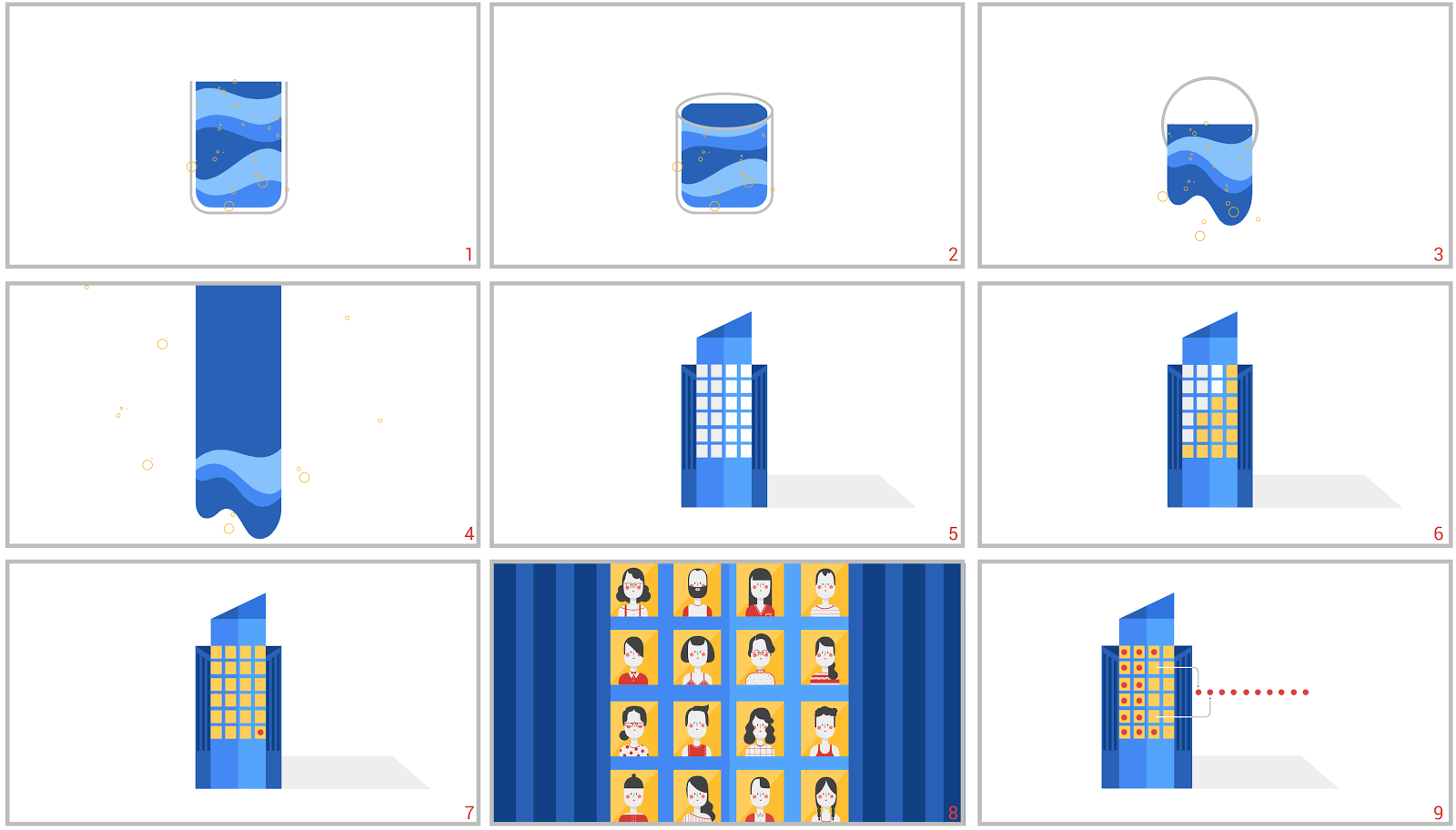
Storyboards: Representing “Data”
With approval of our general color selections, textures, and style, we proceeded to storyboarding the introductory scene. This opening showcases an ever-expanding universe of data. As we considered various shapes to represent data, we chose to save the hexagon for the Google BigQuery and Google Cloud Platform logos. We proposed other geometric shapes with distinct texturing and shading for “data.” See below.
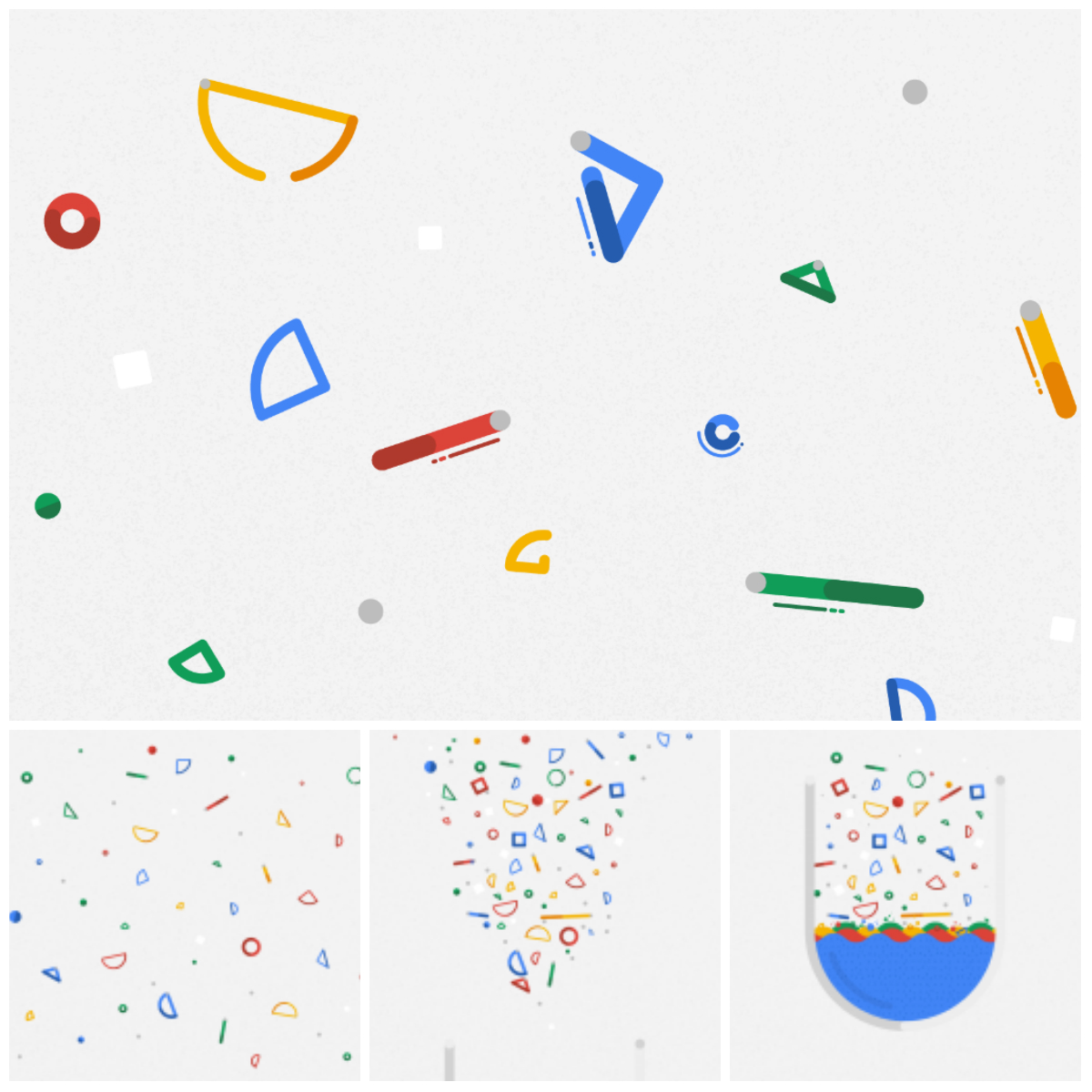
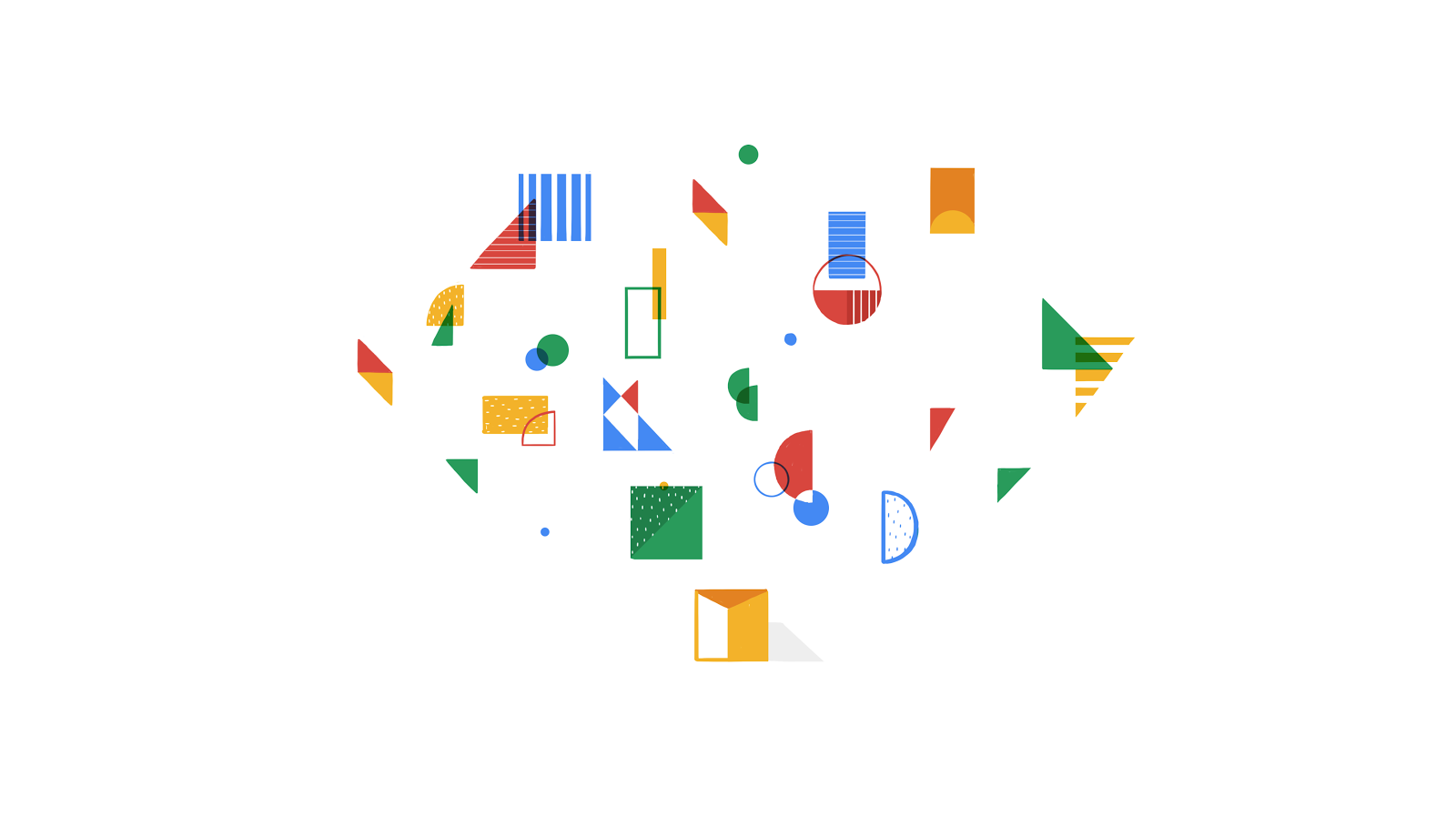
After reviewing our explorations of data, the Google team discovered that circles had been used to represent data by another department. They preferred to keep continuity across departments. So, we proposed that fully-formed circles represent complete data, while hollow circles or circles still forming could represent the processing of a query.

Ultimately, we had to simplify further to lock into that simplified voice for Google BigQuery. It was determined that circles of data could be different colors, but each circle should be a whole color.
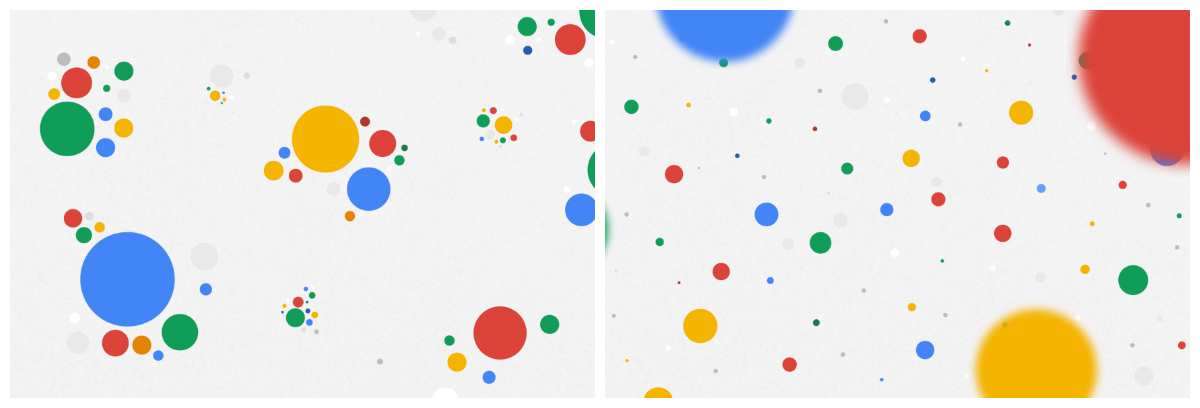
To uniquely brand BigQuery and simplify even further, all data representations changed to mostly Google blue and grey. And there you have a locked storyboard representing “data.”
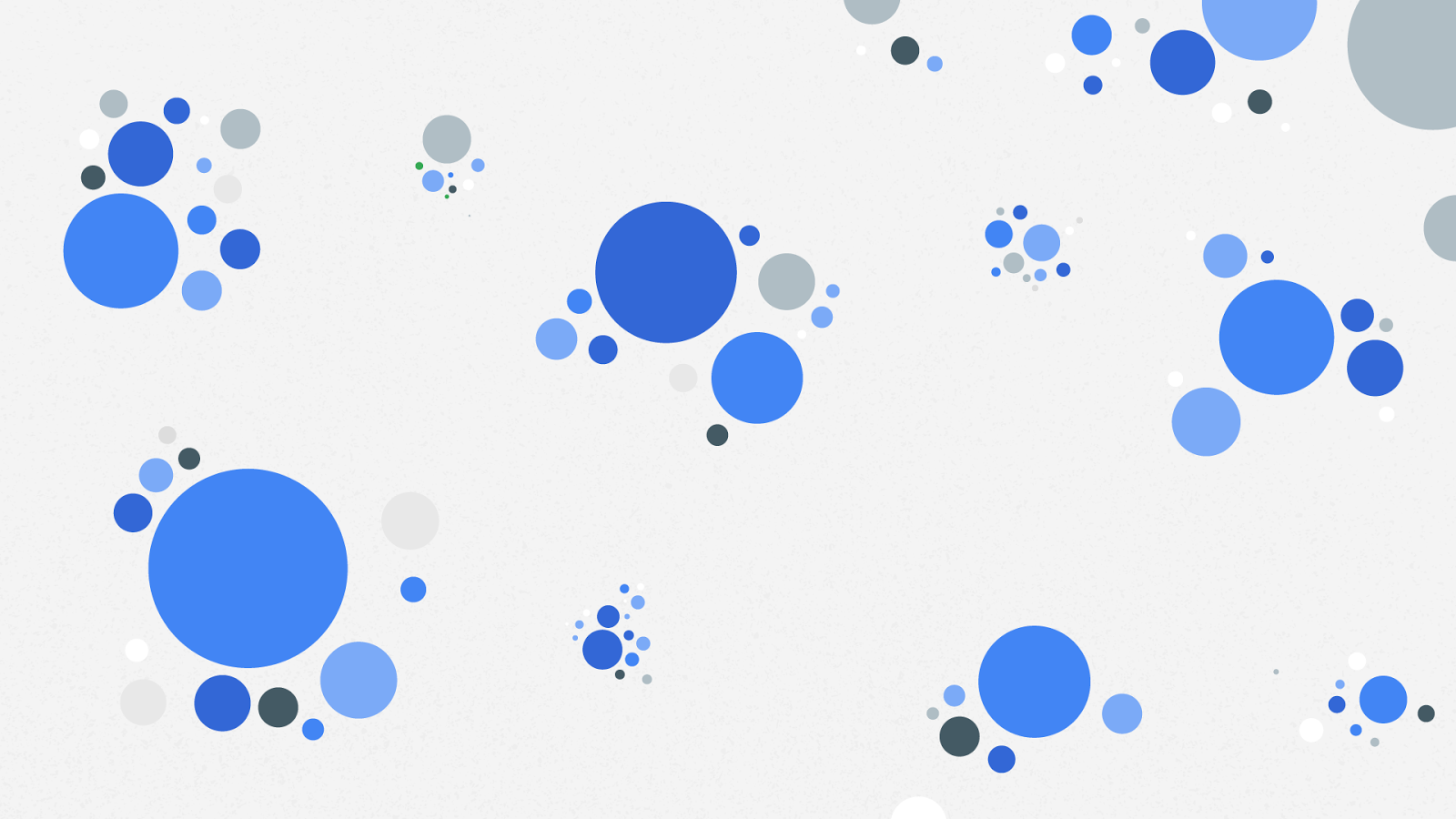
Branded People
One of the final hurdles in our design phase was tackling the representation of people. We initially used circles but obviously had to nix that when data representations moved to circles. We wanted to include something geometric that fit into the overall visual language of the video. Check out some of our explorations below:
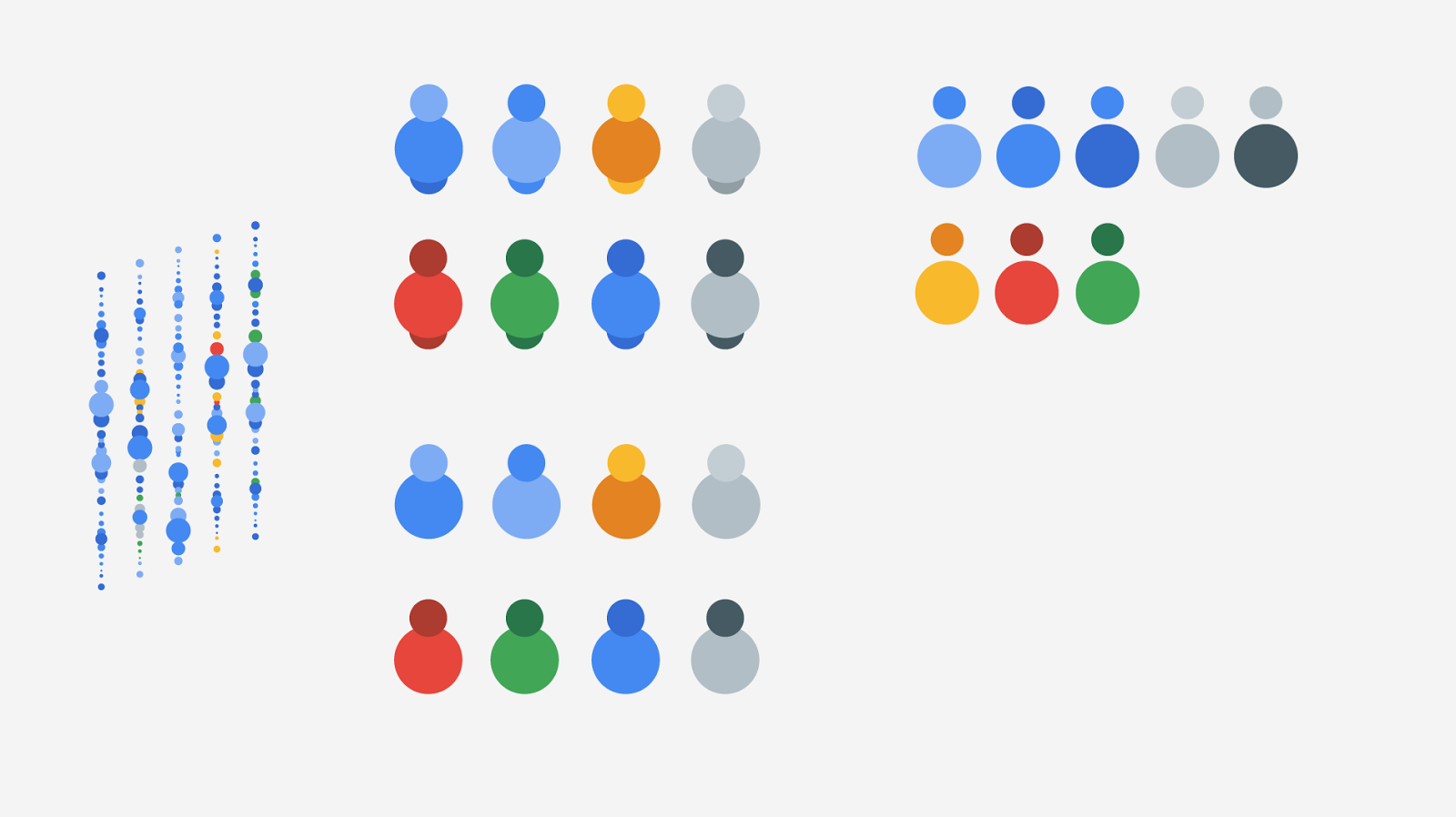

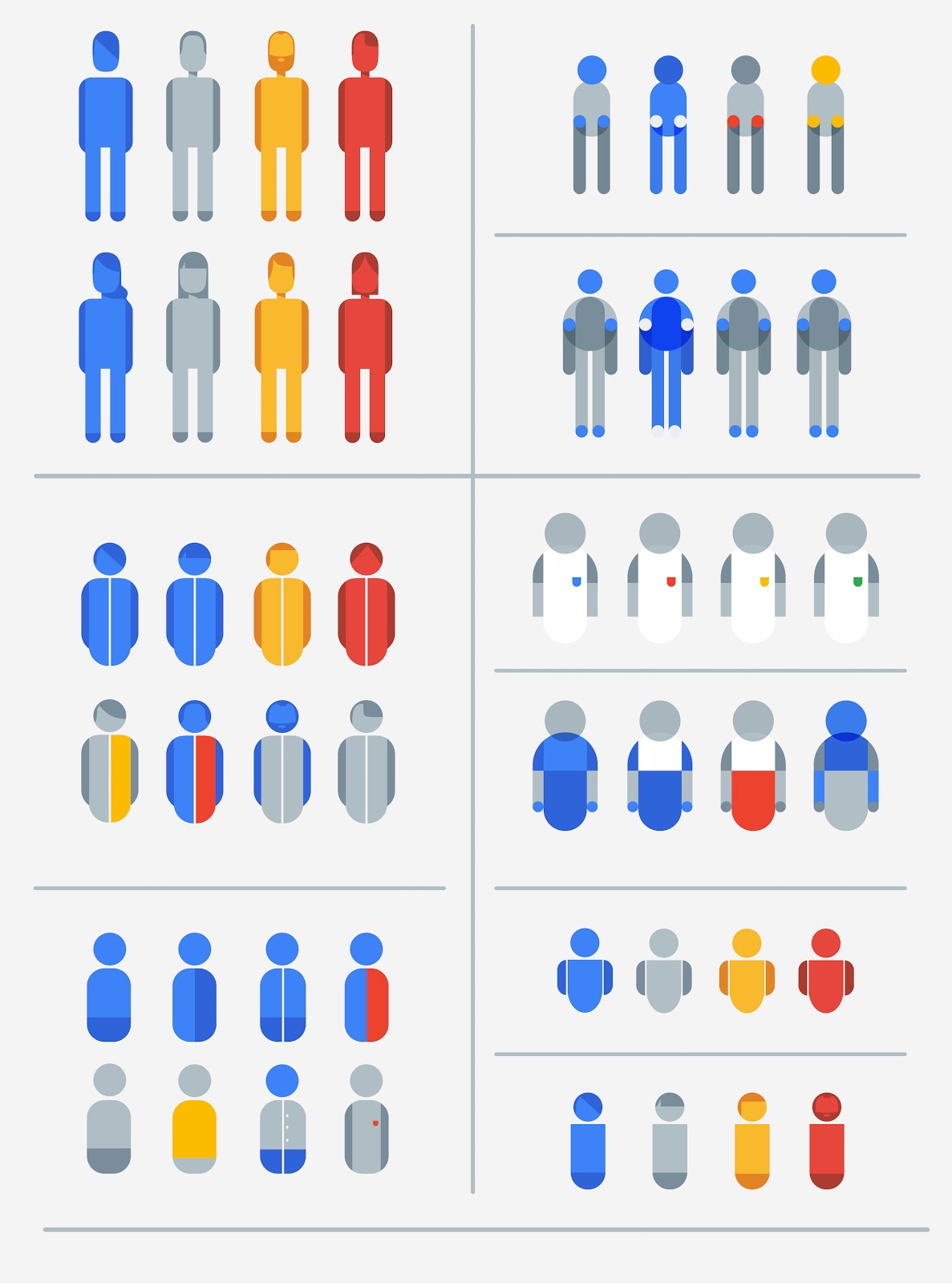
In the end, Google Cloud Platform suggested that BigQuery use similar people to those they used in their recent video campaign. BigQuery gave us permission to adjust their color palette. And so we did! We love these little guys:
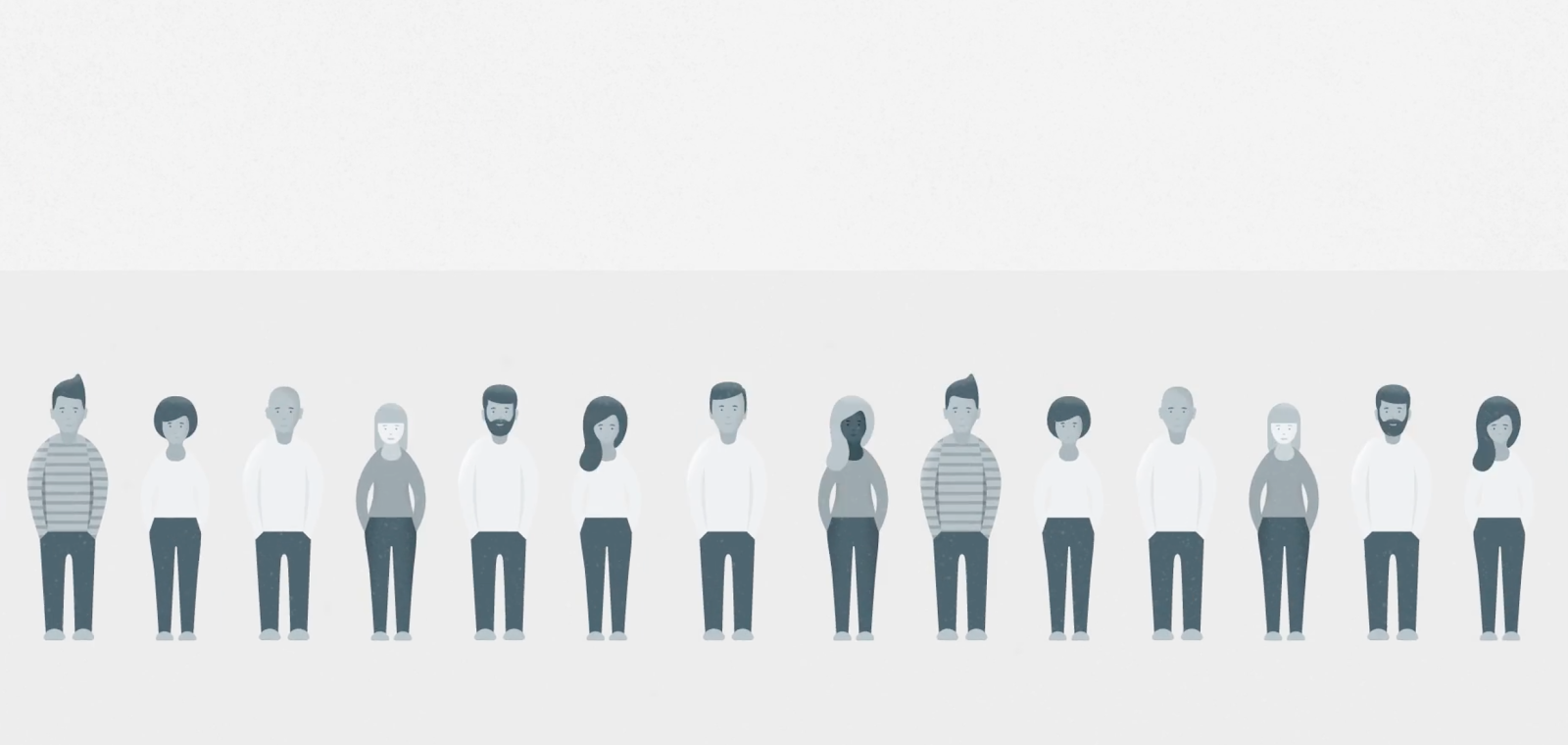
Time to experiment and refine voice are paramount to the development of brand-specific videos. A great deal of research, exploration, and experimentation went into the design of this video. In fact, creating Google BigQuery’s benchmark video was exciting and felt rather soulful. Like dressing a friend for their first date, we relished the opportunity to give Google BigQuery a little help out of the gate.
Check out the full video below. A bit of Google’s “wit” and some physics bring this animation to life. Give David Stanfield, lead designer and animator, and Fe Ribeiro, illustrator, a shout out. Enjoy!

